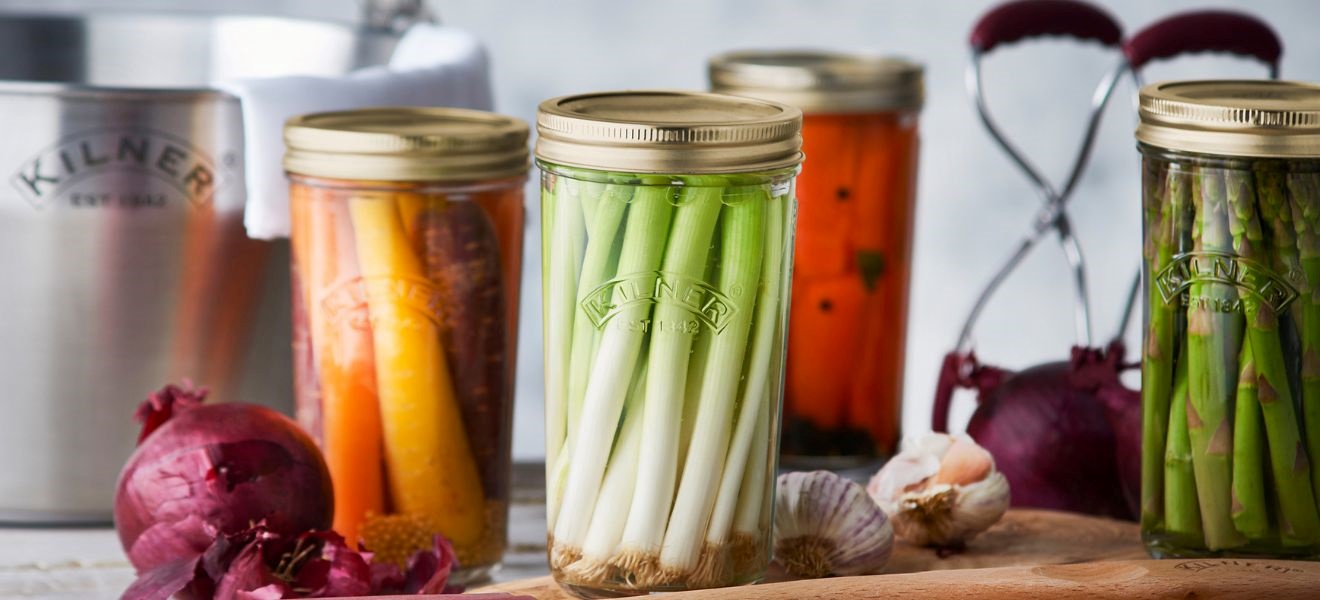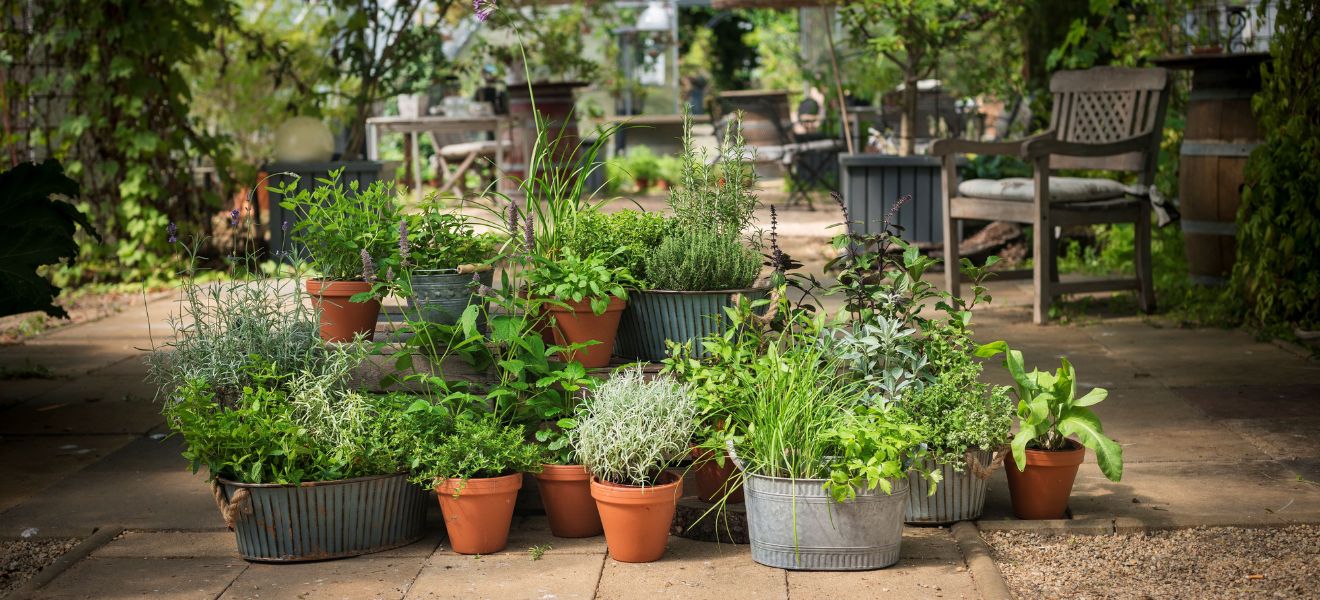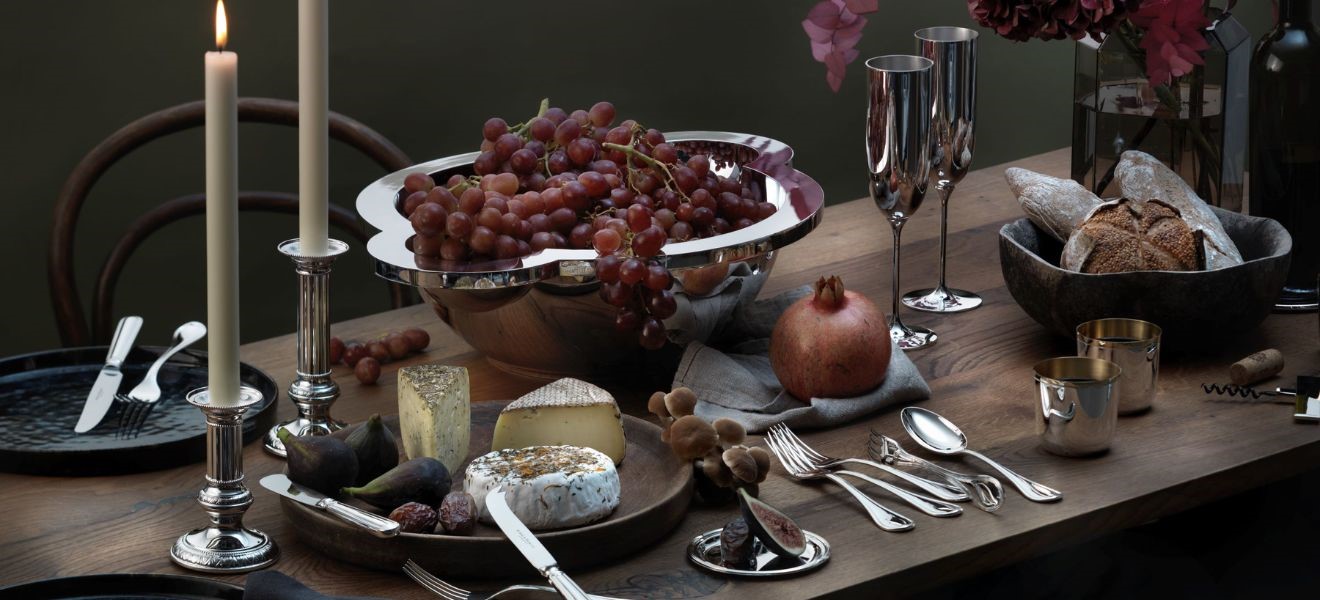Tea is a healthy drink with a variety of flavours – the ideal everyday beverage. In this blog we take you through some tea preparation tips.
Little leaves, big effect
Kettle on, teabag in cup, pour on boiling water: done! That’s the way many of us make tea. However, this is anathema to tea-lovers, as it prevents the tea from developing its full flavour. The good news is: a few simple steps can turn a workaday brew into a great taste experience.Loose, high-quality tea leaves are what you need for a good cup of tea, says tea expert Natalia Panne.
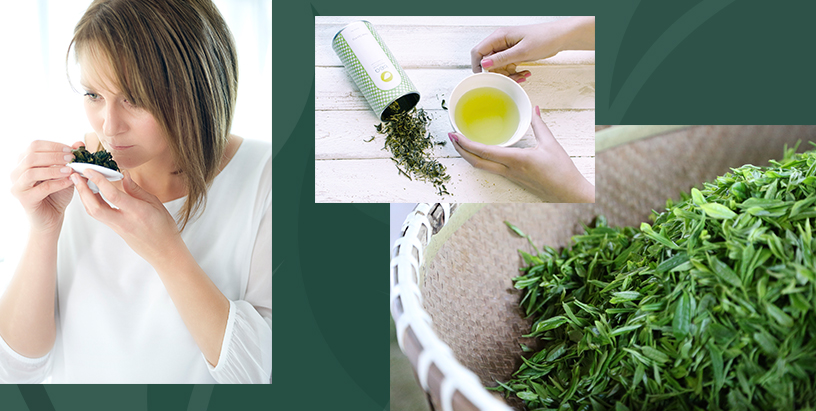
So, what do we need to look for? Firstly, where the tea comes from, the type of soil it’s grown on, and the time it’s harvested all affect the quality of the resulting brew. And it should always be loose-leaf. The connoisseurs’ traditional black tea favourites – Darjeeling, Ceylon and Assam – are now being joined by Japanese varieties Matcha and Sencha, as well as Oolong, Pu’er from Yunnan in China and Chun Mee – twelve boxes of which were thrown overboard during the 1773 Boston Tea Party. “There are no clear trends,” says Madeleine Seel from Berliner Teesalon. Demand tends to be influenced by the seasons.
It’s no wonder, as the individual varieties of tea not only have their own special flavours, but also have different effects on our bodies. Natalia Panne, founder of Tea Exclusive, recommends Oolong tea for autumn: it’s thirst quenching, but doesn’t give off too much heat. In winter, we welcome the warmth from our tea: so a black tea such as Black Honey is welcome, or a naturally matured Pu’er tea. Both warm the soul and bring harmony to the body. In spring, a freshly harvested light green tea provides a lovely, full aroma. It has been scientifically proven that green tea is very easy to digest. It has less caffeine than coffee, and this is broken down more slowly by your body, so its pick-me-up effect is more gentle and sustained.
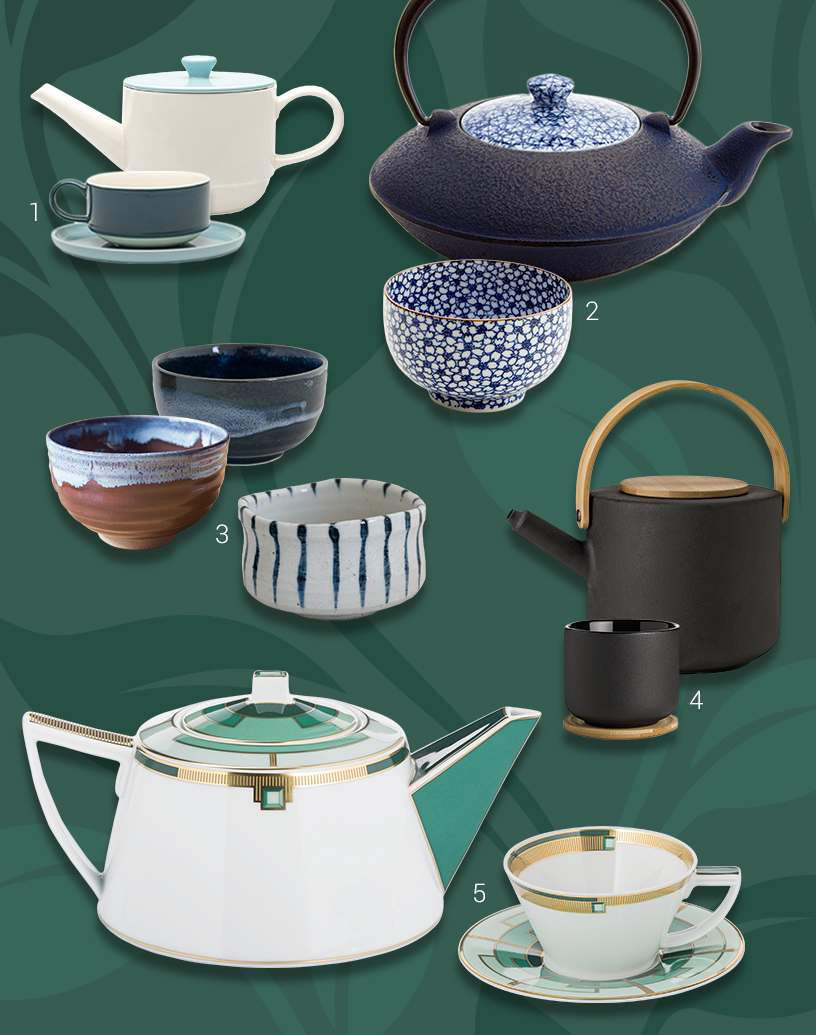
- You should never drink black and green tea from the same type of vessel. Green tea is traditionally drunk from bowls without handles, while black tea tastes best from a teacup.
- 1 Serax
- 2 T. Nishikawa
- 3 Emro Aziatica
- 4 Stelton
- 5 Vista Alegre
Some don’t like it hot
Although tea leaves may seem dry and dusty, they’re actually very sensitive. That’s why water temperature is so important when preparing tea. Green tea should be made with water at 70–80°C, and brewed for 1 or 2 minutes depending on the variety. Hotter water spoils the taste and makes the tea bitter. Black tea can stand more heat, yet you should still wait 1 to 2 minutes after the kettle has boiled before you pour the water onto the tea, ensuring the temperature is 95°C. A tea thermometer is a great practical gift for new tea lovers, so they can find just the right water temperature. Of course fresh water should be used each time.
Freedom of movement
Tea leaves need room to breathe, only then can their taste develop to the full. That’s why some connoisseurs recommend putting loose tea into the pot, pouring water in then using a tea strainer when serving it. Others swear by their tea infusers, which you simply remove from the teapot after the required time – leaving no problems with tea leaves escaping into your cup or your mouth. Another good reason to try these is the creative, witty and stylish range of infusers now available. Design lovers, give your tea some breathing space!
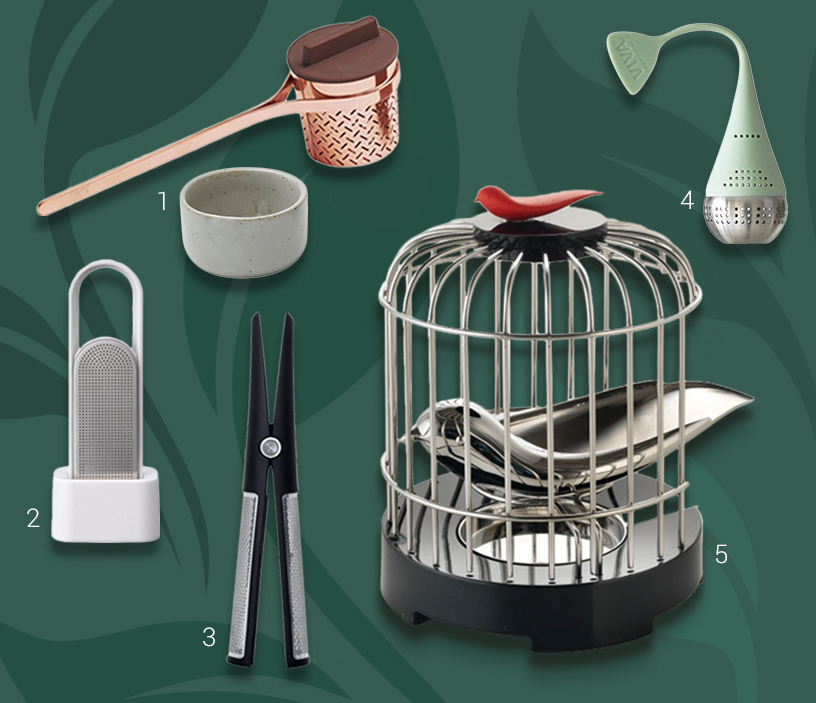
- Tea infusers from: 1 Toast Living
- 2 Kinto
- 3 Blomus
- 4 Viva Scandinavia
- 5 Tea strainer from Alessi
Or, you might go for the tried and tested glass teapot with built-in strainer. Some models let you see the tea leaves (white tea or blossoms) unfolding through their transparent sides, and starting to dance: a unique aesthetic pleasure! A kettle with variable temperature settings ensures the right drawing temperature for different types of tea: settings of 70, 80, 95 and 100 degrees Celsius are ideal.
Storage also affects the quality of tea. Its flavour is quickly spoiled by an excess of warmth, moisture or light. In an airtight, opaque tin made from metal, porcelain or wood, green tea can keep fresh for up to a year, and black tea sometimes even longer.

- 1 Kettle from Ritterwerk
- Tea boxes from: 2 Nambé
- 3 Galzone
- 4 Zen Minded (Design Plus winner)
- Teapots from: 5 Mono
- 6 Hario
Green tea from the Far East
Matcha is one of the green teas experiencing a surge in popularity at present. It is rich in vitamins, minerals, antioxidants and caffeine, and has a naturally refreshing effect. “A cup of Matcha from 2g of powdered tea contains around 64mg of caffeine, almost as much as a double espresso,” says Natalia Panne.
Matcha tea leaves are finely ground, then hot water is added to the powder and swirled with a bamboo whisk called a chasen. This gives the Matcha its typical, slightly frothy consistency. If the tea is left to stand for longer, the powder settles back into the bottom of the cup or bowl. That’s why this tea is best drunk quickly – and without milk or sugar.
It is possible that Matcha is popular not only due to its stimulating effect, but also because of this little preparation ritual. After all, tea lovers aren’t merely wanting to quench their thirst, they’re also looking for a bit of time out. It’s no accident that tea has been celebrated in Asia for thousands of years. Tea ceremonies, inspired by Zen Buddhism and Confucianism, are now considered to be works of art in their own right.
Such ceremonies focus less on eating and drinking than on taking time and being at peace. “Preparation is the most important part of a tea ceremony. It’s not something you do because you want to drink tea,” jokes Pein-Jen Müller-Lierheim, the owner of Taiwanese tea salon Laifufu in Munich. At her tea ceremonies, she uses half-fermented Oolong tea. It has leaves which are brewed several times during the ceremony, after which the tea is drunk from tiny bowls. The hand gestures are complex and precise, but Müller-Lierheim stresses: “This is really not for show, it’s more like meditation or yoga.” What a perfect antidote to our everyday lives, which are often full to overflowing!

